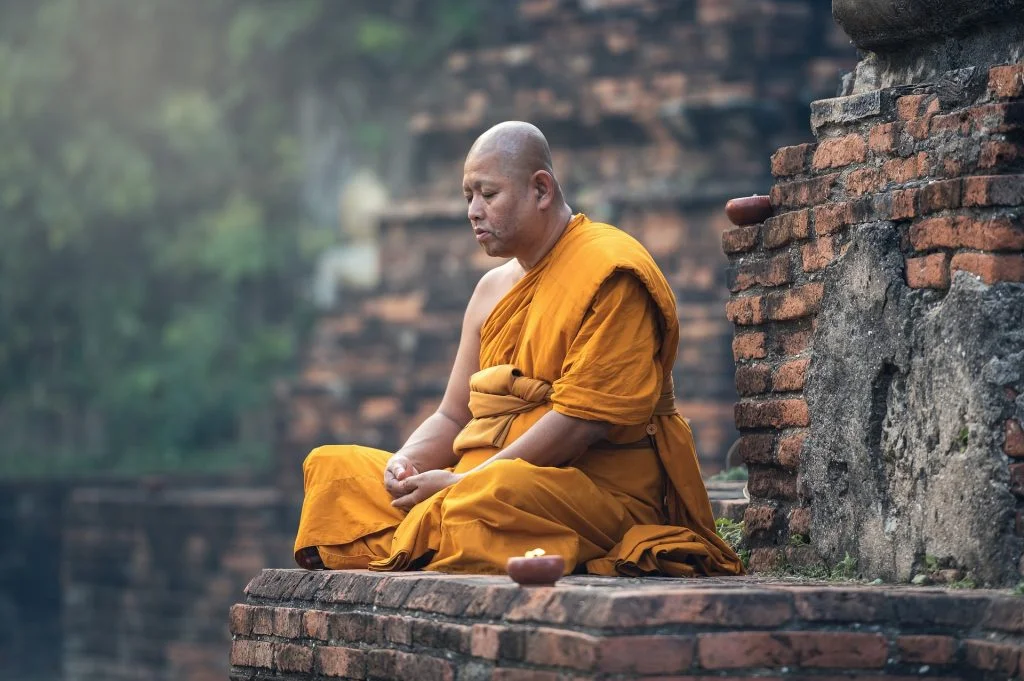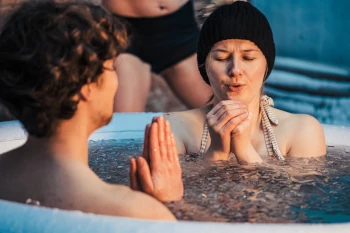Table of contents
Our breathing is very important, but we usually pay little attention to it and also breathe too flat (permanently) and therefore wrong. Because this does not use the entire capacity, but only part of the lungs. The diaphragm is our most important breathing muscle, which contracts when inhaling and extends the lungs together with the rib muscles. The lungs do not have its own muscles and, in combination with the diaphragm, can generate a large negative pressure and thus suck in a lot of air. Healthy diaphragm breathing is generally desirable.
Why is the right breathing in Cold Plunge particularly important?
With Cold Plunge you should try to calm your breath and thus avoid racing heart and shortness of breath. This is almost the body's automatic reaction to the extreme cold. Due to a calm and even breathing rate, the parasympal nervous system is calmed down and you tolerate the cold much better and can therefore stay in the cold longer. Ultimately, Cold Plunge is an extreme stress for the body, which you can calm down with your mental attitude and calm breaths. The most important breathing exercise in Cold Plunge is the quiet breathing during the first 30 seconds that signal your body that everything is fine. Was that already? In principle yes, that is the most important step to survive the Cold Plunge .
Cold Plunge breathing technique according to Wim-Hof / Tummo
If you want to go one step further, there are different breathing exercises that you can use before the Cold Plunge to reduce your sensation of pain and stay in the ice -cold water longer.
One of the best-known breathing techniques is the so-called Wim-Hof Breathing, which, however, came from a Buddhist meditation technology and made it popular worldwide by Wim Hof. It is based on its basic features on the Tummo meditation , which in principle is about creating hyperventilation. Hyperventilation means that fast and deep breaths increase the oxygen content in the blood. This reduces the carbon dioxide and you can feel tingling in your hands and feet as well as slight drowsiness. Some find this uncomfortable, but through training you can get used to breathing and the "side effects" very well. How exactly does the breathing technique go?

Take in a comfortable position, which can be either lying or sitting. When you sit, you should pay attention to a straight seating position.
- First phase: breathe in and out 30-40 times quickly and deep. You can do that through the mouth or nose. Ideally, you breathe out through your nose and through your mouth. Do not take any breaks between your breaths, but try to get into a breath flow.
- Second phase: After the last breath of the first phase, you breathe out completely, so press the air out of your lungs and then hold your breath. You stick your breath until the urge to stand up to breathe in again. That should take at least 15 seconds, but rather go towards one minute. In the following cycles you will notice that you can keep the air longer and longer in the second phase. You will also beat your heart more clearly and feel a certain heat development, as well as a tingling in your extremities.
- Third phase: If the urge gets big enough, you breathe in vigorously and keep your breath for about 15 seconds.
After you went through these 3 phases, repeat this cycle twice, so you do the whole thing three times. You can only do this once or four times, this decision should best be based on how you feel.
As soon as you have completed the breathing exercise, you will return to your "normal" breathing and get into an upright position if you are lying. Take 1-2 minutes to recalibrate and then go into the ice water.
What do the studies say?
Studies such as those of the University of Nijmegen from the Netherlands suggest that conscious breathing techniques can influence the sympathetic. This means that you can generally increase your performance by pulling up the oxygen content in your blood at short notice. This can also help with intellectual activities or physical exercises (more push -ups, etc.). Occurrence like this states that scientific evidence is missing for strengthening the immune system.
Conclusion
Breathing properly is not only important for Cold Plunge . The most important and easiest to implement is a calm, even breathing, especially during the first seconds in the cold. You can very well go without the hyperventilation Cold Plunge , sometimes I do it when the time and calm is there. Consciously and slowly going into the water and then breathing calmly is just as important.







